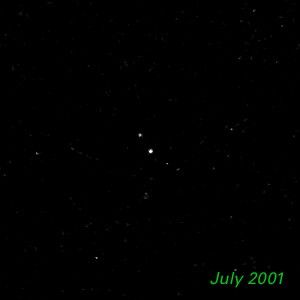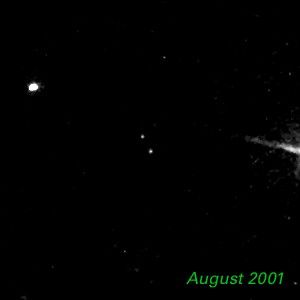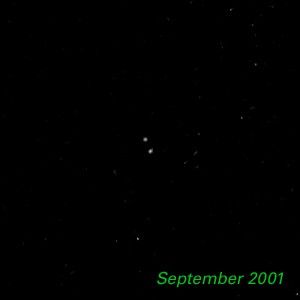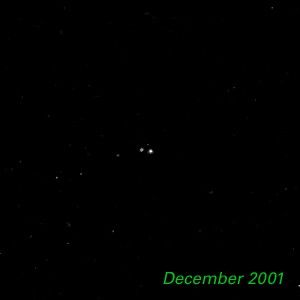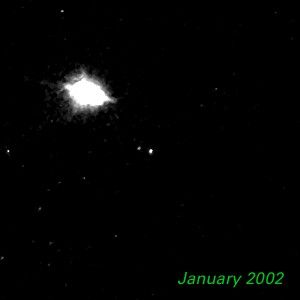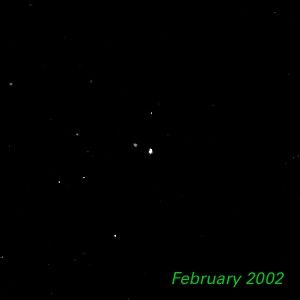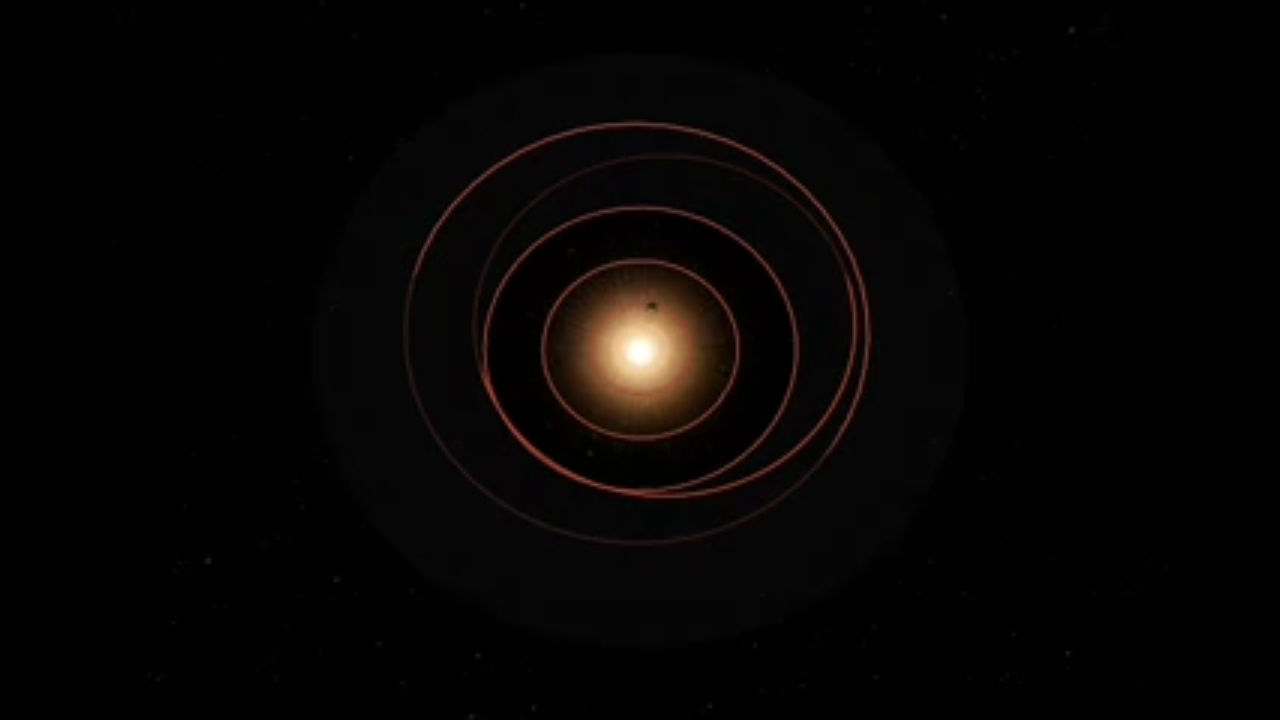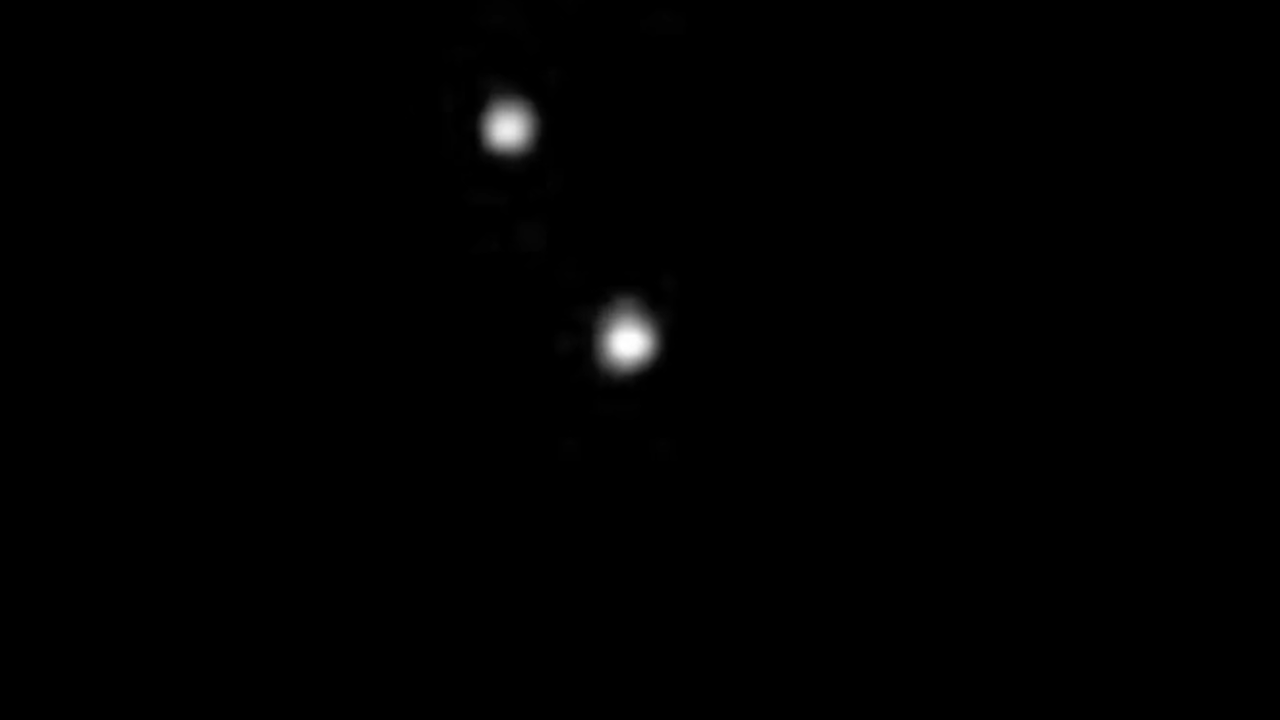1 min read
Artist’s View of Kuiper Belt Object 1998 WW31
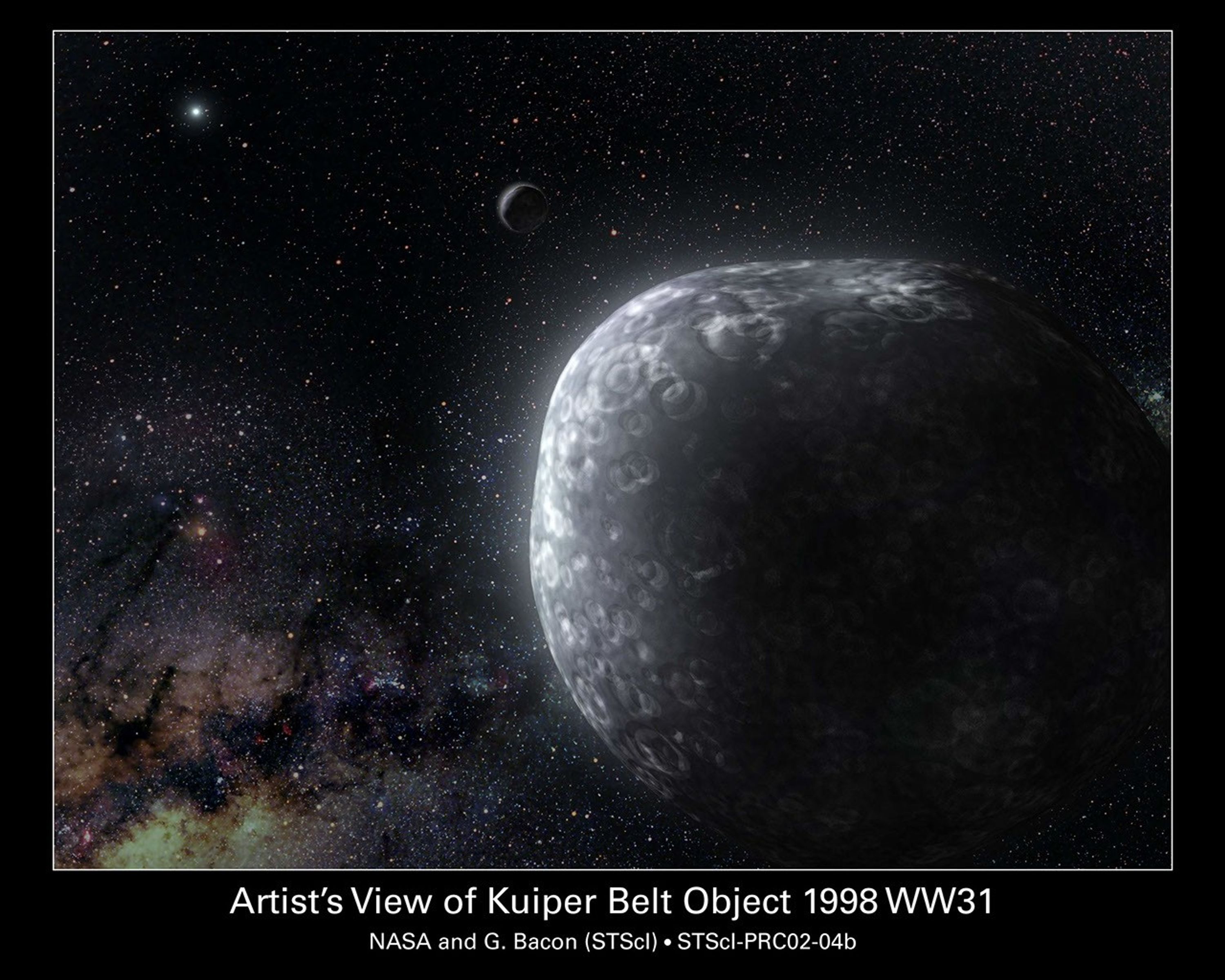
About the Object
- DistanceDistanceThe physical distance from Earth to the astronomical object. Distances within our solar system are usually measured in Astronomical Units (AU). Distances between stars are usually measured in light-years. Interstellar distances can also be measured in parsecs.Distance from the Sun: The binary object has a semi-major axis of ~ 45 astronomical units (6.7 x 109 km or 4.2 x 109 miles). Distance from Earth: During the time of the HST observations (July 2001- February 2002) the binary system was ~ 46.5 astronomical units from the Earth. Distance between objects: The semi-major axis of the components of the binary system is ~ 22,300 km (13,900 miles). The eccentricity of the orbit makes this physical distance vary between 4,000 and 40,000 km (2,500 and 25,000 miles). Orbit: The binary objects have an orbital period about each other of ~ 570 days. The system orbits the Sun every 300 years.
- DimensionsDimensionsThe physical size of the object or the apparent angle it subtends on the sky.The HST image is roughly 7 arcseconds (roughly 226,000 km or 141,000 miles) across. The binary objects are estimated to be roughly 150 km and 130 km in diameter. Total Mass: The binary objects have a total mass of 0.00021 that of Pluto.
- Object NameObject NameA name or catalog number that astronomers use to identify an astronomical object.1998 WW31
- Object DescriptionObject DescriptionThe type of astronomical object.Kuiper Belt Object
- Release DateApril 17, 2002
- Science ReleaseHubble Hunts Down Binary Objects at the Fringe of Our Solar System
- CreditNASA and G. Bacon (Space Telescope Science Institute)
Related Images & Videos

Hubble Hunts Down Binary Objects at the Fringe of Our Solar System
NASA's Hubble Space Telescope snapped pictures of a double system of icy bodies in the Kuiper Belt. This composite picture shows the apparent orbit of one member of the pair. In reality, the objects, called 1998 WW31, revolve around a common center of gravity, like a pair of...

Relationship of the Kuiper Belt to the Oort Cloud
This illustration shows that the Kuiper Belt is shaped like a disk [see inset diagram] and resides within the shell-like structure of the Oort Cloud. Located on the outskirts of the solar system, the Kuiper Belt is a "junkyard" of countless icy bodies left over from the solar...

The Orbit of 1998 WW31 in the Kuiper Belt
This illustration compares the orbit of the binary Kuiper Belt object, called 1998 WW31, with the orbits of Pluto and Neptune, the outermost solar system planets. The inset picture, consisting of six snapshots taken by NASA's Hubble Space Telescope, shows one member of the...
Share
Details
Claire Andreoli
NASA’s Goddard Space Flight Center
Greenbelt, Maryland
claire.andreoli@nasa.gov

























